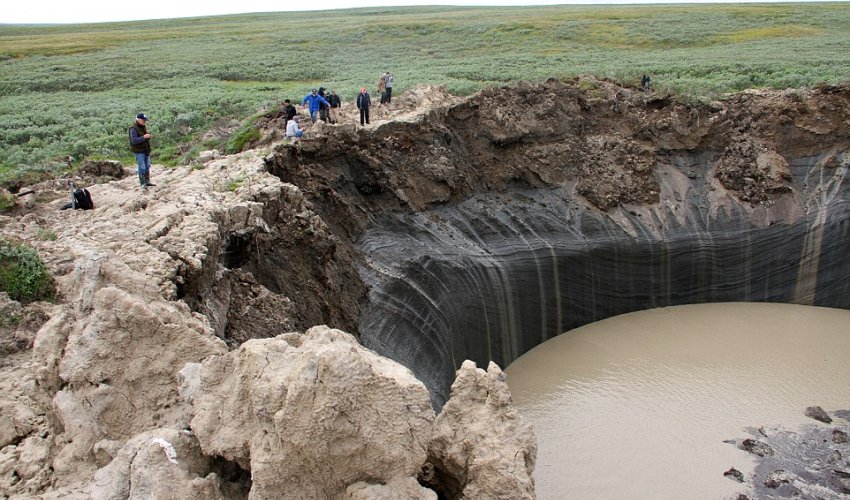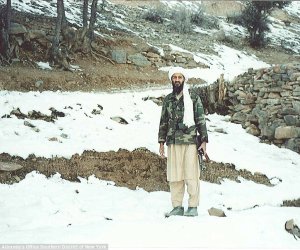Mystery of Siberia's 200ft-deep craters solved

Russian scientists say mystery giant holes suddenly appearing in northern Siberia were caused by dramatic gas eruptions, a process previously 'never observed'.
A new expedition this week to several craters dotting the energy-rich Yamalo-Nenets reindeer region region found evidence they were previously pingos, mounds with an inner ice core common in Arctic and sub-Arctic regions.
Warming over a number of years triggered melting and the resulting empty space inside the ice humps became filled with natural gas, mainly methane, which eventually triggered eruptions.
Professor Vasily Bogoyavlensky, who led the latest expedition, examined the most famous crater - known as B-1 - which is 18 miles from Bovanenkovo gas field.
Scientists were this week surprised to find that echo-sounding equipment showed the crater to be more than 200 feet (60 metres) deep, significantly more than previously believed, and large enough 'to fit a multistorey building'.
The hole is already almost full of water after the melting of the winter snow cover. When it was visited last year, its base was far shallower - essentially a lake is beginning to form.
'We can now [explain] more confidently about the process that led to the formation of the famous Yamal crater B-1,' he told The Siberian Times. 'Initially it was a pingo.'
A pingo is a mound of earth-covered ice found in the Arctic that can reach up to 230 ft (70m) in height and up to 2,000 ft (600m) in diameter.
In this case warming from geothermal heat caused this pingo to 'thaw and its half melted ice core [became] filled with gas that originates from the depth through cracks and faults in the ground.
'We know for sure that there is a fissure in the ground on this spot, probably even two intersecting cracks.
'Gullies around the spot confirm this. Through the cracks, deep natural gas got into the melting ice core.
'[Gas] filled it and the pingo erupted.
'It was also heated by a stream of warmth coming from the bowels of the earth through the cracks.'
The process is different than usual because normally pingos thaw and collapse, forming craters and then lakes.'
With the B-1 crater and others known as B-3 and B-4 'we see that the pingo erupts due to the gas, which fills its core.
'It is very interesting process and we have never observed it before.'
He explained: 'I think that next year it will be full of water and it will turn completely into the lake. After 10-20 years it will be difficult to say what happened here.
'The parapet will be washed away with rains and melting snow, the banks will be covered with grass.
(dailymail.co.uk)



www.ann.az
Similar news
Similar news




































 Photo
Photo 



 Video
Video 

